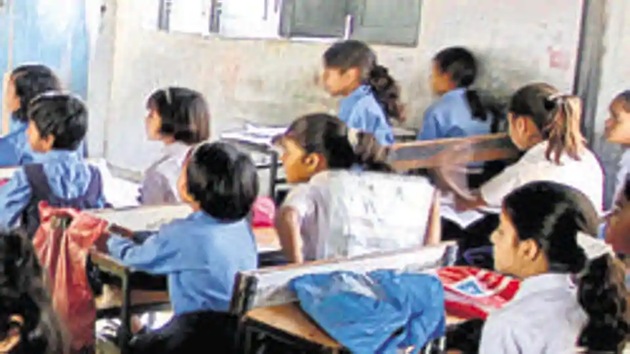Outbreak may hit India’s poor enrolment numbers
India needs to be extra cautious in preventing its school enrolment rates from falling, particularly because many of those who stop going to school in the country do so because of financial reasons.
UN secretary-general Antonio Guterres on Tuesday said getting students safely back to classrooms must be a top priority of the governments once local transmission of Covid-19 pandemic is under control. He said the world is facing a “generational catastrophe” that could waste untold human potential, undermine decades of progress, and exacerbate entrenched inequalities.

India needs to be extra cautious in preventing its school enrolment rates from falling, particularly because many of those who stop going to school in the country do so because of financial reasons. A drop in school enrolment would not only cost the country in terms of upward mobility in education but also hit the nutrition levels of children who receive free mid-day meals in schools.
Click here for full Covid-19 coverage
Findings from a National Statistical Office (NSO) survey on social consumption on education, conducted in 2017-18, show that India’s gross enrolment ratio (GER) was 99.2 between primary and middle school education level. GER is the ratio of the number of students currently enrolled in a particular level of education to the number of persons in the corresponding official age-group. For example, the ratio of 99.2 in primary to middle school level means for every 100 persons in the age group of 6 to 13 years, there are 99.2 students enrolled in classes 1st to 8th.
To be sure, this does not mean nearly everyone in the age group of 6 to 13 is enrolled in schools because some of the students in classes 1st to 8th would be students from other age groups, particularly above the age of 13. The high enrolment ratio at primary to middle level is a promising figure, but it drops to only 78.8 at the secondary and higher secondary level.
Also read: Brazil, hotbed for Covid-19 vaccine testing, may struggle to produce its own
A fall in GER from primary to higher levels of schooling means that students drop out. Nationally, 10% of students enrolled in primary school had dropped out, the survey found. A drop-out is defined as a person who did not complete the last level of education the person was enrolled in (for any reason other than completion of the desired level of education). The drop-out rate increases to 17.5% in upper-primary/middle school and to 19.8% in secondary school. This means nearly every fifth student was dropping out of secondary school in India.
Among big states, the overall dropout rate from education institutions is the highest in West Bengal, 23.5%. Odisha, Assam, and Gujarat also have high dropout rates.
Why do Indian students drop out? Financial constraints and engagement in economic and domestic activities were the leading reasons cited. Only 18.8% of men and 14.8% of women were not attending schools because of not being interested in education. As many as 61.2% of men cited financial constraints or engagement in economic activities as the reason for not attending schools while 47.9% of women blamed financial constraints or engagement in domestic activities.
As India struggles to recover from the economic fallout of the Covid-19 pandemic, it would be a challenge to get people to prioritise education in times of financial difficulties and a need to engage in economic activities.
In case there is a drop in school enrolment or an increase in the number of students dropping out, it would not only mean that India will suffer in terms of upward mobility in education, but also in terms of health. This is because India has a free mid-day meal scheme for school-going children.
The NSO survey found that in government schools, nearly 97% of students attending primary level, nearly 87% attending upper-primary/middle level, and nearly 26% attending secondary level were receiving free mid-day meals. A majority of India’s students study in government schools – 74% of all primary school students, 76% of upper-primary/middle students and 68% of secondary and higher secondary level students.






